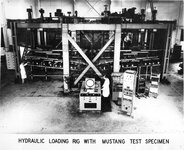Thumpalumpacus
Lieutenant Colonel
I saw nothing in the Dallas videos that indicated structural failure. I think
 wlewisiii
brings up the only real point worth mentioning about grounding, that of preserving our heritage, but even then that's up to the owners so long as the plane can get an airworthiness cert.
wlewisiii
brings up the only real point worth mentioning about grounding, that of preserving our heritage, but even then that's up to the owners so long as the plane can get an airworthiness cert.


